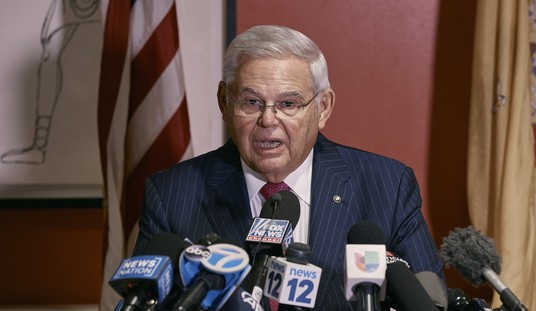In the fall of last year, a man in a dark suit walked into a UPS Store in Las Vegas, Nevada, flashed a badge, identified himself to the store manager as a Special Agent H. Charles Maurer of the Department of Homeland Security and demanded to see private files on an individual who keeps a postal box there. Familiar with state law, the store manager, M. E. Burks, told the man that he’d have to produce a subpoena first.
According to a federal grievance document viewed by this reporter, the federal agent told the store manager, “I don’t need a subpoena, I have this badge. Now, get me the files.” Burks refused to hand anything over and notified the customer in question instead. The customer, as it turned out, was a U.S. Federal Air Marshal named P. Jeffrey Black. Special Agent Maurer was his boss and was conducting an extrajudicial and unauthorized investigation on Black.
Black is an employee of the Transportation Security Administration (TSA). Although he is not an official spokesman, owing to his Whistleblower status he is one of only a handful of TSA employees allowed to give interviews with news organizations on matters of public safety (he testified for Congress in 2004). Black has been quoted in publications as diverse as Consumer Reports and the Federation of American Scientists.
Black believes that TSA’s volatile work environment, epitomized by Special Agent Maurer’s assertion that his badge makes him above the law, is directly linked to the agency’s increasing inability to keep air travelers safe. Since October 2007, USA Today, CNN, Consumer Reports and the Washington Post have run lengthy articles giving TSA failing marks. Black says the TSA is more determined to keep up appearances than it is to keep passengers safe.
Black isn’t the only TSA employee who has linked the agency’s poor performance with its heavy-handed treatment of its critics. Annie McKeehan worked as a TSA screener from 2005-2007 in four, separate East Coast airports and witnessed what she says were four work environments similarly appalling.
The former health worker and 62-year old grandmother of ten became a TSA screener at an age most people are getting ready to retire; she saw it the perfect day job while attending night school. But after two years, McKeehan became so fed up with what she says included security lapses, abuse of power and fiscal waste at TSA, she wrote a book based on her experiences. Disguised as fiction (as per her TSA contract) and written under her maiden name, she called it Screener. A little over a month before her book published, McKeehan was called into TSA offices and interrogated.
“They had been monitoring my personal emails. Ones I’d sent from my home computer using a personal email account,” McKeehan explained. In an email to a friend, she’d written that she was fed up with TSA.
“In an email, I wrote, ‘I have a plan,’ meaning a plan for my future,” McKeehan explained. “When I arrived at this interrogation, my TSA supervisor, Bob Adams, and the Operations Manager, Mitchell Moore, had those words written out on a paper which they put in front of me. They kept asking me about ‘my plan.’ I told them it was illegal to monitor my personal correspondence unless I was a national security threat. They said ‘maybe I was.’ So, I said, ‘if I’m such a threat to this country, then why am I reporting to work as a Screener in Charlottesville every day?'”
TSA Screener Annie McKeehan and Federal Air Marshal P. Jeffrey Black both sought to expose the inner workings of an agency so mired in secrecy, the National Security Archives’ Barbara Elias has testified to Congress that TSA is an agency built on “dubious secrets.” One of TSA’s closely held secrets has been the number of employees who’ve been fired or who’ve quit. The TSA told this reporter “that information is not public.” The Air Marshal service says its numbers are classified. In a 2005 investigation of the Air Marshals by the House Judiciary Committee, TSA denied Congress access to its employment figures.
Because transparency is the hallmark of democracy, Congress’ oversight arm, the General Accounting Office (GAO), sought to make TSA’s numbers transparent. In 2005, the GAO discovered that the Department of Homeland Security lost employees at a rate that was more than twice the average for a Cabinet level agency and more than four times the federal average. More importantly, Congressional Quarterly noted that “when TSA’s Transportation Security Officers (TSOs) are removed from the equations” DHS’ attrition rate was more than cut in half. That was as close to a number as anyone has managed to get. Until last week – when TSA started a blog.
Yes, a blog. The beauty of blogs is that they lend themselves to transparency. Interactive in nature, dialogue tends to reveal that which is hidden or kept secret. As future President Woodrow Wilson said back in 1913, “Everybody knows that corruption thrives in secret places, and avoids public places, and we believe it a fair presumption that secrecy means impropriety. So, our honest politicians and our honorable corporation heads owe it to their reputations to bring their activities out into the open.” Was TSA really going to bring itself out into the open with this blog?
Inadvertently, it did. It took exactly one week for TSA to make public on its blog one of its closest-held secrets: how many employees have left the agency in its short, six-year history? The TSA has a Congressionally-mandated work force of 43,000 screeners. But how many people have signed on and been let go?
In an entry from February 15, 2008 called, “The TSA, Our Officers, The Public and Theft,” Christopher [White] from the TSA Evolution Blog Team,” addressed a recent news story about a screener caught stealing gift cards from a passenger’s bag at O’Hare”
“To date, we have terminated and sought prosecution for about 200 of our employees who have been accused of stealing, either from checked bags, passengers’ carry-ons or fellow employees. While 200 out of more than 110,000 employees is a minuscule percentage (less than one half of one percent) over the short life of the agency, one theft is too many when you are in the position of public trust as we are.”
Here’s the translation, broken down, in plain English.
· The TSA has a work force of 43,000.
· TSA blogger Christopher [White] says TSA has had a total of “more than 110,000 employees” in its six-year history.
· That means more than 67,000 individuals who entered into employment contracts with TSA have left the agency over this period of six years.
That’s not attrition. That’s exodus. And it’s egregious fiscal waste.
Bob Marchetta is the Executive Vice President of the American Federation of Government Employees (AFGE) local 2222-a union for TSA screeners. Marchetta is also a former TSA Screener, a member of TSA’s second graduating class. “TSA has spent as much as $40,000 for an individual’s training,” Marchetta said. “That number has been trimmed down, and is now between $15,000 and $20,000, per individual, for training.”
Multiply the lowest-end estimated training costs by 67,000 employees who’ve left the agency-that’s more than $1 billion dollars into thin air.
This kind of lopsided spending hardly makes sense. “If those figures are correct, than that is waste,” Former DHS Inspector General Clark Kent Ervin told this reporter (Ervin blogs about air security for the New York Times). “There needs to be a balance in TSA’s budget. They need to pay screeners and pay for their training, in balance.”
TSA employees earn, on average, $29,000 a year. “The TSA has created a system of disposable employees,” Marchetta says. “TSA spends all this money on training, but nobody they train stays. It’s like building a foundation on sand.”
So, why do so many TSA employees leave their jobs? This reporter asked the TSA. “All the TSA employees I talk to love their job,” agency spokesman Christopher White said in an interview last November, adding, “Employees who complain about TSA should go get a new job.”
And to the tune of 67,000 of them, it’s clear that they have.
Aside from the torrents of money being wasted, why should Americans care? “It’s a matter of public safety,” says Annie McKeehan. “There are so many new hires at TSA, it’s spooky. Ask yourself, who do you want x-raying the bags that are going to be with you and your family on a plane? A two or three-year TSA veteran? Or a new hire who just came off a ten-day training program? To become good at any job takes practice, it takes time.
Which is the heart of the matter. The entire premise of the TSA is to counter the threat of terrorists, many of who are trained for jihad over a lifetime. When you measure a screener with 120-hours of training – someone who earns $13.99 an hour and who’s statistically more likely to leave their job than stay – up against that kind of terrorist threat, the outcome looks grim.
Annie Jacobsen writes about aviation security and homeland security for a variety of newspapers, magazines and blogs. She is the author of the book, Terror in The Skies, Why 9/11 Could Happen Again.









Join the conversation as a VIP Member